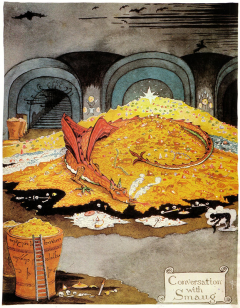
Smaug is a dragon and the main antagonist in J. R. R. Tolkien's 1937 novel The Hobbit, his treasure and the mountain he lives in being the goal of the quest. Powerful and fearsome, he invaded the Dwarf kingdom of Erebor 171 years prior to the events described in the novel. A group of thirteen dwarves mounted a quest to take the kingdom back, aided by the wizard Gandalf and the hobbit Bilbo Baggins. In The Hobbit, Thorin describes Smaug as "a most specially greedy, strong and wicked worm".
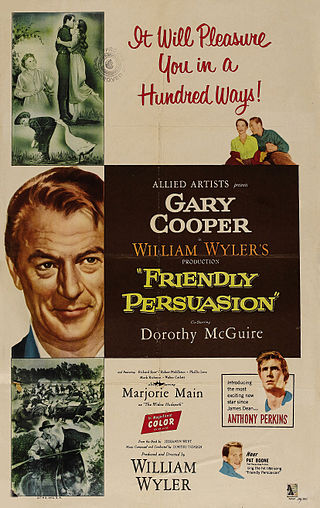
Friendly Persuasion is a 1956 American Civil War drama film produced and directed by William Wyler. It stars Gary Cooper, Dorothy McGuire, Anthony Perkins, Richard Eyer, Robert Middleton, Phyllis Love, Mark Richman, Walter Catlett and Marjorie Main. The screenplay by Michael Wilson was adapted from the 1945 novel The Friendly Persuasion by Jessamyn West. The movie tells the story of a Quaker family in southern Indiana during the American Civil War and the way the war tests their pacifist beliefs.
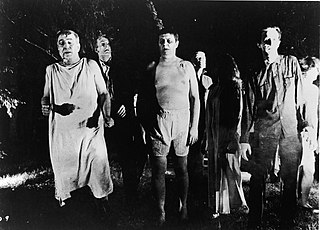
A B movie, or B film, is a type of low-budget commercial motion picture. Originally, during the Golden Age of Hollywood, this term specifically referred to films meant to be shown as the lesser-known second half of a double feature, somewhat similar to B-sides in the world of recorded music. However, the production of such films as "second features" in the United States largely declined by the end of the 1950s. This shift was due to the rise of commercial television, which prompted film studio B movie production departments to transition into television film production divisions. These divisions continued to create content similar to B movies, albeit in the form of low-budget films and series.
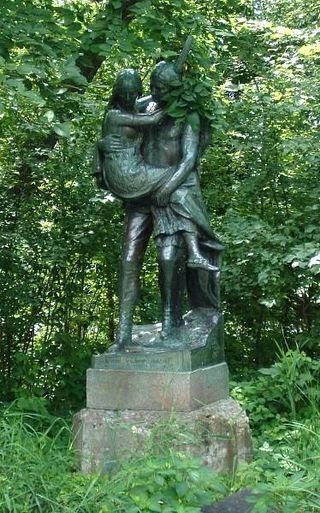
The Song of Hiawatha is an 1855 epic poem in trochaic tetrameter by Henry Wadsworth Longfellow which features Native American characters. The epic relates the fictional adventures of an Ojibwe warrior named Hiawatha and the tragedy of his love for Minnehaha, a Dakota woman. Events in the story are set in the Pictured Rocks area of Michigan on the south shore of Lake Superior. Longfellow's poem is based on oral traditions surrounding the figure of Manabozho, but it also contains his own innovations.
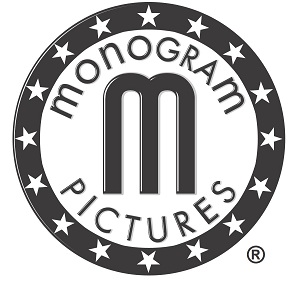
Monogram Pictures Corporation was an American film studio that produced mostly low-budget films between 1931 and 1953, when the firm completed a transition to the name Allied Artists Pictures Corporation. Monogram was among the smaller studios in the golden age of Hollywood, generally referred to collectively as Poverty Row. Lacking the financial resources to deliver the lavish sets, production values, and star power of the larger studios, Monogram sought to attract its audiences with the promise of action and adventure.

Carl Foreman, CBE was an American screenwriter and film producer who wrote the award-winning films The Bridge on the River Kwai and High Noon, among others. He was one of the screenwriters who were blacklisted in Hollywood in the 1950s because of their suspected communist sympathy or membership in the Communist Party.

The Independent Moving Pictures Company (IMP) was a motion picture studio and production company founded in 1909 by Carl Laemmle. The company was based in New York City, with production facilities in Fort Lee, New Jersey. In 1912, IMP merged with several other production companies to form Universal Film Manufacturing Company, later renamed Universal Pictures Company with Laemmle as president.

A singing cowboy was a subtype of the archetypal cowboy hero of early Western films. It references real-world campfire side ballads in the American frontier, the original cowboys sang of life on the trail with all the challenges, hardships, and dangers encountered while pushing cattle for miles up the trails and across the prairies. This continues with modern vaquero traditions and within the genre of Western music, and its related New Mexico, Red Dirt, Tejano, and Texas country music styles. A number of songs have been written and made famous by groups like the Sons of the Pioneers and Riders in the Sky and individual performers such as Marty Robbins, Gene Autry, Roy Rogers, Tex Ritter, Bob Baker and other "singing cowboys". Singing in the wrangler style, these entertainers have served to preserve the cowboy as a unique American hero.

King Richard and the Crusaders is a 1954 American historical film adaptation of Sir Walter Scott's The Talisman made by Warner Bros. The film stars Rex Harrison, Virginia Mayo, George Sanders and Laurence Harvey, with Robert Douglas, Michael Pate and Paula Raymond. It was directed by David Butler and produced by Henry Blanke from a screenplay by John Twist based on Sir Walter Scott's 1825 novel The Talisman. The music score was by Max Steiner and the cinematography by J. Peverell Marley. This was Warner Bros.' first essay into CinemaScope. King Richard and the Crusaders was listed in the 1978 book The Fifty Worst Films of All Time.

The Steel Helmet is a 1951 American war film directed, written, and produced by Samuel Fuller during the Korean War. The cast stars Gene Evans, Robert Hutton, Steve Brodie, James Edwards, and Richard Loo. It was the first American film about the war and the first of several war films by Fuller.

Rogue Cop is a 1954 American film noir directed by Roy Rowland, based on the novel by William P. McGivern, and starring Robert Taylor, Janet Leigh, and George Raft.
The culture of Minnesota is a subculture of the United States with influences from Scandinavian Americans, Finnish Americans, Irish Americans, German Americans, Native Americans, Czechoslovak Americans, among numerous other immigrant groups. They work in the context of the cold agricultural and mining state.

The B movie, whose roots trace to the silent film era, was a significant contributor to Hollywood's Golden Age of the 1930s and 1940s. As the Hollywood studios made the transition to sound film in the late 1920s, many independent exhibitors began adopting a new programming format: the double feature. The popularity of the twin bill required the production of relatively short, inexpensive movies to occupy the bottom half of the program. The double feature was the predominant presentation model at American theaters throughout the Golden Age, and B movies constituted the majority of Hollywood production during the period.

Travels with My Aunt is a 1972 American comedy film directed by George Cukor, written by Jay Presson Allen and Hugh Wheeler, and starring Maggie Smith. The film is loosely based on the 1969 novel of the same name by Graham Greene. The film's plot retains the book's central theme of the adventurous, amoral aunt and her respectable middle class nephew drawn in to share her life, and also features her various past and present lovers who were introduced in the book, while providing this cast of characters with different adventures to the ones thought up by Greene, in different locales. It was released on December 17, 1972.
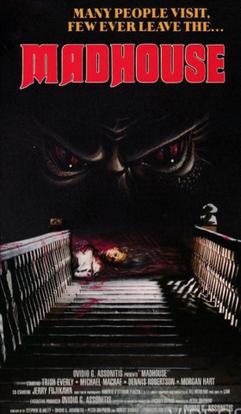
Madhouse is a 1981 Italian slasher film directed and co-written by Ovidio G. Assonitis, and starring Trish Everly, Dennis Robertson, Allison Biggers, and Michael Macrae. The plot follows a schoolteacher in Savannah, Georgia being stalked by her psychopathic twin sister in the days leading up to their birthday. The film's original title takes its name from a poem called There Was a Little Girl by Henry Wadsworth Longfellow.

The portrayal of Indigenous people of the Americas in popular culture has oscillated between the fascination with the noble savage who lives in harmony with nature, and the stereotype of the uncivilized Red Indian of the traditional Western genre. The common depiction of Indigenous Americans and their relationship with European colonists has changed over time. Today indigenous Americans are fully modern peoples who retain much of their cultural beliefs and traditional practices.
My Pal Wolf is a 1944 American drama film directed by Alfred L. Werker from a screenplay by Lillie Hayward, Leonard Praskins and John Paxton based on a story by Frederick Hazlitt Brennan. Produced and distributed by RKO Radio Pictures, the film was released on October 8, 1944. The film stars Sharyn Moffett, Jill Esmond, Una O'Connor, George Cleveland, Charles Arnt and Claire Carleton. The picture also marked the debut of producer Adrian Scott, a communist who would later become a member of the Hollywood Ten.

Yvette Dugay was an American actress. She was often credited as Yvette Duguay.

Hiawatha is a 1913 American silent drama film directed by Edgar Lewis and based upon Henry Wadsworth Longfellow's epic poem The Song of Hiawatha (1855). The film stars Jesse Cornplanter of the Seneca people and Soon-goot, a 17-year-old unknown actress. The movie is the first feature film to use a cast of Native Americans.
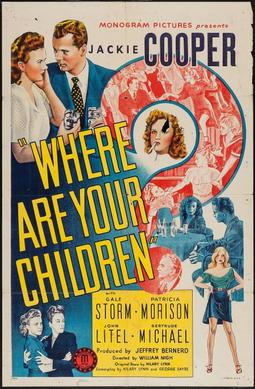
Where Are Your Children? is a 1943 American crime film directed by William Nigh and written by Hilary Lynn and George Wallace Sayre. The film stars Jackie Cooper, Gale Storm, Patricia Morison, John Litel, Gertrude Michael and Anthony Warde. The film was released on November 26, 1943, by Monogram Pictures.

















